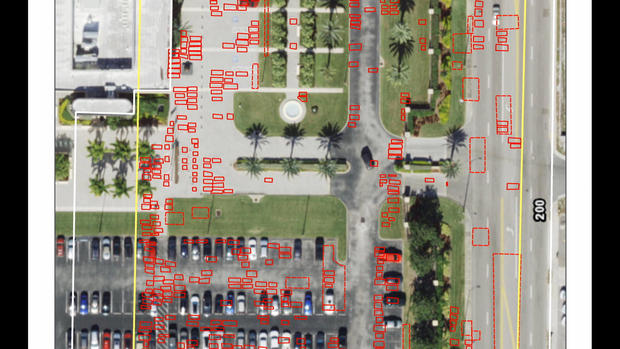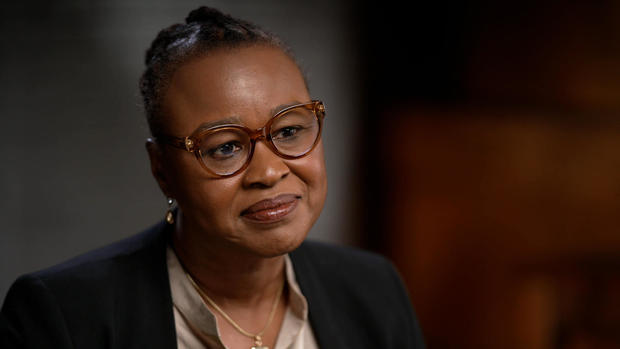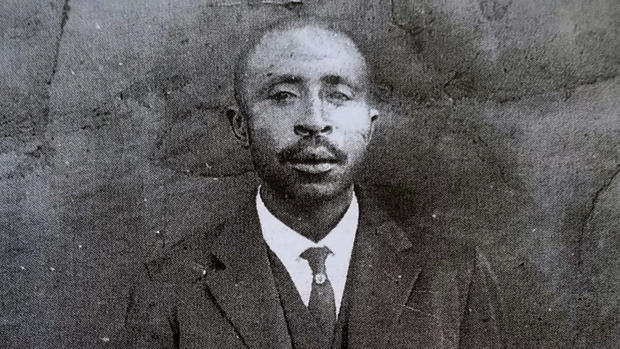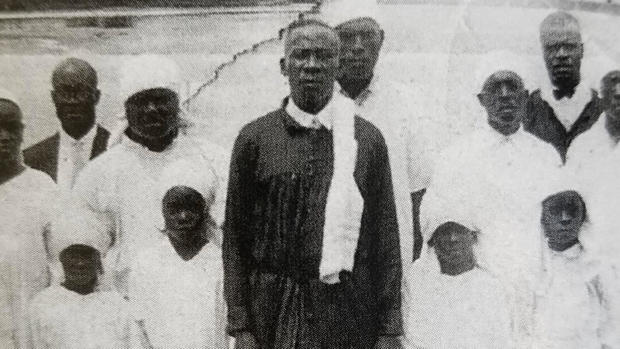Florida city reckoning with its past as paved over Black cemeteries uncovered
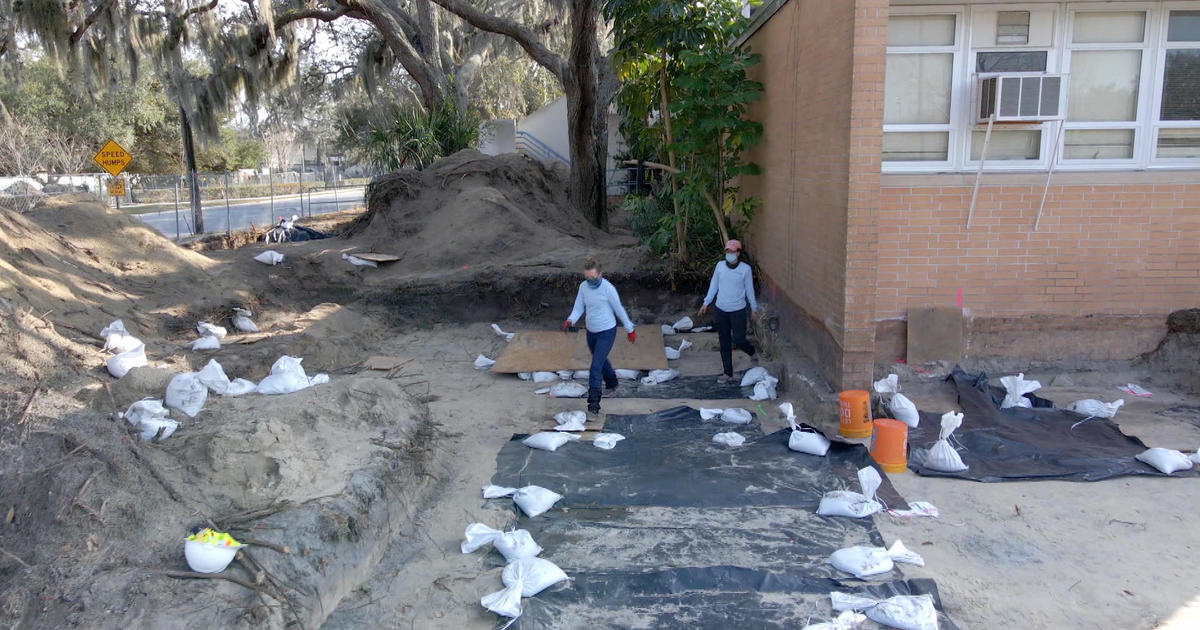
In the first half of the 20th century, Clearwater Heights, Florida, was a Black neighborhood — thriving, proud and anchored by faith. But being in the segregated south, African Americans couldn’t stay at the White hotel, walk on the beach or swim in the bay. In death, they were laid to rest in segregated graveyards.
Those cemeteries were sacred ground until the ground became valuable. In the 1950s, headlines announced that the city of Clearwater made a deal on moving a “Negro” cemetery. Hundreds of African American bodies were to be reburied to make way for a swimming pool. A department store was planned for the site of another Black cemetery, where again, the bodies were to be moved. But O’Neal Larkin remembers, many years later, his first revelation that something was terribly wrong.
“It’s not an imaginary thing that I seen. It’s what I seen with my own eyes,” Larkin told 60 Minutes correspondent Scott Pelley.
In 1984, Larkin, now 82 years old, watched a construction crew dig a trench through the site of a “relocated” Black cemetery.
“But I remember the parking lot where the engineers– traffic engineer was cutting the lines through,” Larkin said, “and they cut through two coffins. That was my first knowledge of seeing it because I walked out there, and I seen it myself.”
In 2019, the Tampa Bay Times reported many segregated cemeteries in Florida had been, essentially, paved. It was then that the modern city of Clearwater decided to exhume the truth.
Rebecca O’Sullivan and Erin McKendry are archeologists for a company called Cardno. Cardno was hired by the city to map the desecration.
“These individuals were loved. They were family members; they were fathers and mothers,” McKendry told Pelley. “And they were interred with love.”
“People deserve to be treated with respect,” O’Sullivan said. “That’s the most important thing.”
McKendry and O’Sullivan pushed ground penetrating radar over a segregated cemetery where an office site stands today. They found 328 likely graves, many, under the parking lot, perhaps a few under the building and more beneath South Missouri Avenue. 550 graves are in the cemetery’s record, McKendry and O’Sullivan found evidence of 11 having been moved in the 1950s.
“So there may be hundreds of bodies still at that site?” Pelley asked.
“It’s possible,” O’Sullivan said.
Not far away, the archeologists probed another former cemetery. There, in the 1950s, rather than integrate the White community pool, the city said it would move hundreds of bodies to build a Black swimming pool and a Black school.
“But the bodies were not removed,” McKendry said.
Cardno found the proof last year. It excavated just deep enough to confirm what ground penetrating radar had suggested.
A prayer was said over the site, then they planed the sand and sieved a century of time in search of grave markers or tributes. Inevitably relics included human remains. Teeth at the office building site and bones at the school, which had closed in 2008, because it was obsolete.
“All of the information and the data that we collected does indicate that there are additional burials likely below the footprint of that school building,” McKendry said.
O’Neal Larkin watched the excavation and imagined the groundbreaking at the school construction site in 1961.
“To dig the foundation to put this school upon,” Larkin said. “They had to hit some form of remains.”
It’s likely some families could not afford a tombstone, but the archeologists found graves were marked.
“This is a marker that would’ve been used initially after the burial if a stone was not ready to be placed. And in some cases, this is all that would’ve been used to mark the location of a burial,” McKendry said.
Erin McKendry showed us Cardno’s catalogue of evidence. A dime, new in ’42, was among many tributes left with the dead.
“We also found this brass wedding ring at approximately the same location and the same depth as the dime,” McKendry said.
The tributes and disturbed human remains were carefully reburied exactly where they were found pending a decision on what to do next.
Anthropologist Antoinette Jackson leads the African American Burial Ground Project at the University of South Florida. She’s building a database of desecrated cemeteries.
“Not just Clearwater, it’s nationally from New York, all the way out toward Texas, and all the way down to South Florida where these cemeteries had been built over– erased, marginalized, underfunded and need support in order to make them whole and have this history known,” Jackson told Pelley. ” This is not an isolated story, unfortunately.”
So far, Jackson has listed about 70 effaced Black cemeteries nationwide. Under housing, freeways and the county-owned parking lot of Tropicana Field, home to baseball’s Tampa Bay Rays.
“What we want to bring forward is the memory, the knowledge that these sites were there, these places, these cemeteries, these families were there, live, died, worked, contributed to our country, to their communities, to our hometowns,” Jackson said.
“Is there evidence of White cemeteries being lost, abandoned,” Pelley asked, “forgotten in the way that these are?”
“There are abandoned cemeteries across the board,” Jackson said. “There are cemeteries that are not only African American cemeteries or Black cemeteries that have been in some way desecrated, but the issue is more acute with Black cemeteries because of issues like slavery, segregation in which this particular community were legally and intentionally considered lesser than or marginalized by law.”
In Clearwater they’re debating how to honor those entombed beneath the school, South Missouri Avenue and the property of the FrankCrum Company, which bought its headquarters for its staffing business decades after the cemetery was erased.
“I’m sure that, when they purchased that property, they didn’t know that there were bodies there,” Zebbie Atkinson, head of the Clearwater NAACP, said.
“What would you say to someone who might make the argument that that disturbing Missouri Avenue, disturbing the FrankCrum corporation, disturbing the schools,” Pelley asked Atkinson, “way too much effort at this point in time?”
“I would say that that’s not their call. They have no family buried there,” Atkinson said.
Atkinson is helping lead the conversation of what to do now among descendants, businesses and the city.
“Some people want to have the bodies moved to a place where they can properly memorialize them. Some of the descendant community wants to let the people stay where they are. Those are the type of things that need to be worked out,” Atkinson said. “We have to sit and talk about it. I mean there is no easy answer with that.”
Whether the failure, in the last century, to move the graves was deceit, incompetence, or indifference, we do not know. But today, Clearwater is spending $270,000 to learn the truth. The city told 60 Minutes it is searching for a compromise that will honor the dead. The FrankCrum Company told us it wants to be part of the community’s solution. Ideas include monuments. But for a few, like O’Neal Larkin, there’s only one route to justice.
“Tear it down,” Larkin told Pelley. “Tear down that building, as far as I’m concerned. Tear the school down. Make it a shrine of memories so that people can go and use it in a proper way of remembering. To treat ’em with more dignity than what this has been treated.”
Pelley noticed dignity was treated gently in the White cemeteries of Clearwater. In one he found a monument to a Confederate soldier, the grave decorated with a fresh banner of racism. But when that cemetery found itself blocking a planned road, it was granted a reverent, circular, detour.
Of those citizens buried in the black cemeteries of Clearwater, there are images of only these: the Reverend Arthur L. Jackson, the Reverend Joseph Hines and Mack Dixon Sr. who was buried beside his wife, Florence, three children and two grandchildren. We do not know the faces of 500 more who remain forever bound by segregation and lost to the memory of time.
Share this news on your Fb,Twitter and Whatsapp
Times News Network:Latest News Headlines
Times News Network||Health||New York||USA News||Technology||World News

